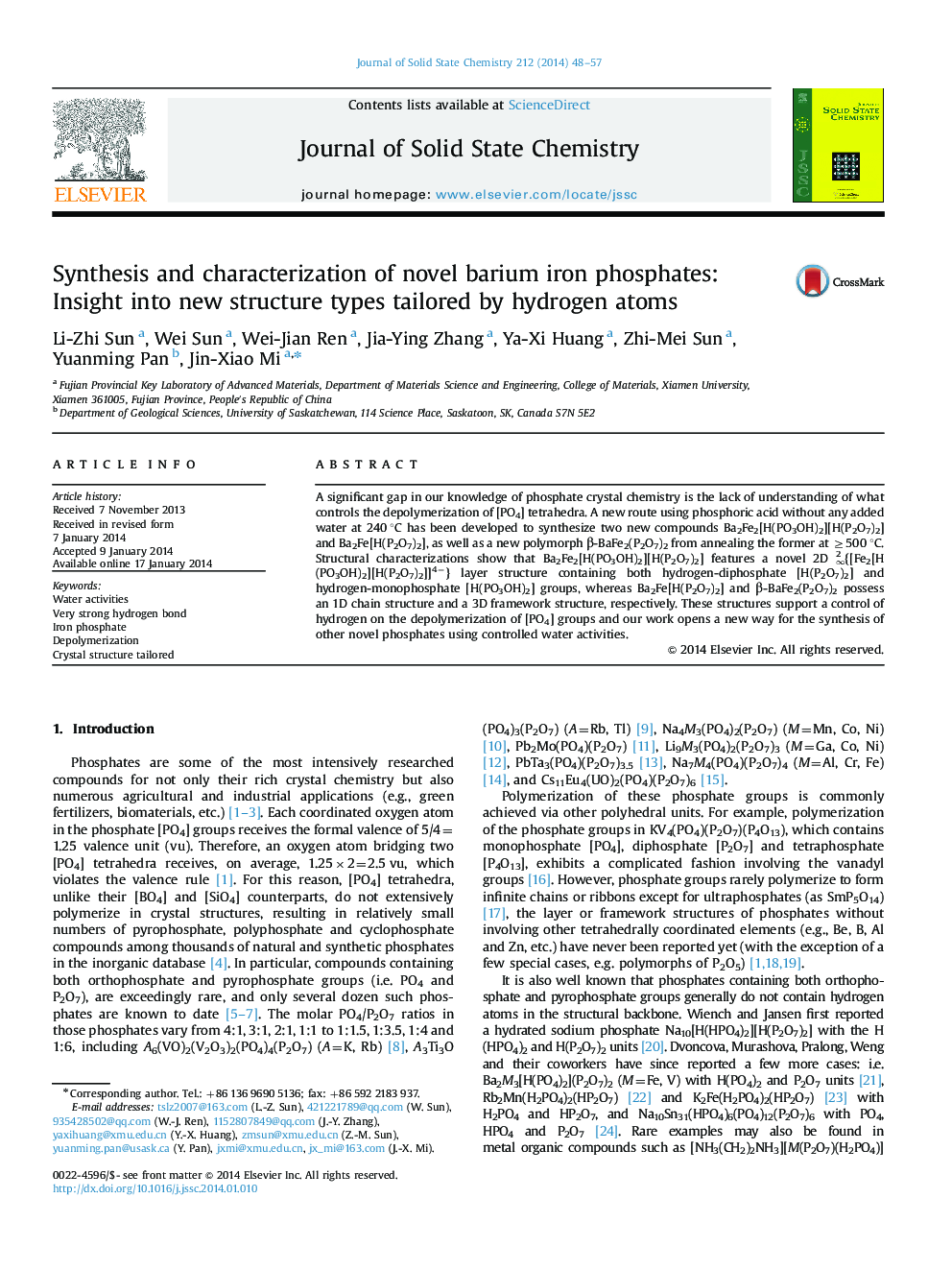| Article ID | Journal | Published Year | Pages | File Type |
|---|---|---|---|---|
| 1329857 | Journal of Solid State Chemistry | 2014 | 10 Pages |
•A new mild thermal route for the synthesis of novel phosphates.•Water activities controlling the reaction: 2H3PO4↔H4P2O7+H2O.•Phosphate with mixed hydrogen-monophosphate and diphosphate groups.•H atoms in the structural backbone affect the depolymerization of PO4 groups.
A significant gap in our knowledge of phosphate crystal chemistry is the lack of understanding of what controls the depolymerization of [PO4] tetrahedra. A new route using phosphoric acid without any added water at 240 °C has been developed to synthesize two new compounds Ba2Fe2[H(PO3OH)2][H(P2O7)2] and Ba2Fe[H(P2O7)2], as well as a new polymorph β-BaFe2(P2O7)2 from annealing the former at ≥500 °C. Structural characterizations show that Ba2Fe2[H(PO3OH)2][H(P2O7)2] features a novel 2D 2∞{[Fe2[H(PO3OH)2][H(P2O7)2]]4−} layer structure containing both hydrogen-diphosphate [H(P2O7)2] and hydrogen-monophosphate [H(PO3OH)2] groups, whereas Ba2Fe[H(P2O7)2] and β-BaFe2(P2O7)2 possess an 1D chain structure and a 3D framework structure, respectively. These structures support a control of hydrogen on the depolymerization of [PO4] groups and our work opens a new way for the synthesis of other novel phosphates using controlled water activities.
Graphical abstractA new route of controlled water activities led to syntheses of three new compounds, indicating water plays a crucial role in the formation of novel phosphates.Figure optionsDownload full-size imageDownload as PowerPoint slide
